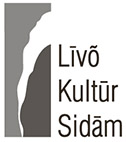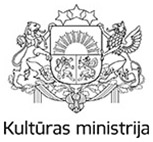The Livonian alphabet has 39 letters. The diacritical marks have the same meaning as in Latvian. A long vowel is written with a macron or straight line (ā, ǟ, ē, ī, ō, ȱ, ȭ, ū) and a palatalized or “soft” consonant is written with a comma (ḑ, ļ, ņ, ŗ, ț). Palatalized consonants are pronounced with a subtle y quality following the main consonant. For example, ḑ sounds a bit like dy pronounced quickly. In some UK English pronunciations of dew, new, tube, the consonant sounds occurring at the beginning of these words sound similar to the Livonian letters ḑ, ņ, ț. The letter ļ sounds similar to Italian gl in words like figlio ‘son’. The letter ŗ sounds similar to the ry sound in Russian говорю (govoryu) ‘(I) speak’. Other Livonian consonants are pronounced much as in English. Exceptions are j which is pronounced as y in ‘year’ and r which is rolled. Also, tš is used to write approximately the same sound as ch in English church.

Livonian alphabet.
The vowels a, e, i, o, u are not pronounced as in English, but more like in other European languages such as Latvian, Finnish, German, Spanish. The vowel ä sounds like a in English cat. The vowel õ in the first syllable of a word is pronounced similarly to Estonian õ, but in other syllables like u in English up. The vowel ȯ is pronounced as an intermediate sound between o and u. Livonian also has short and long diphthongs. The first vowel in the short diphthongs ie and uo and triphthongs ieu and uoi is pronounced very short almost like English y and w, as in mier ‘sea’, kuodā ‘home’, kuoig ‘ship’, kieuž ‘rope’. In words with the long diphthongs īe and ūo, the first vowel is pronounced long, as in īe ‘night’, sūo ‘swamp’.
Primary stress in Livonian is on the first syllable.






